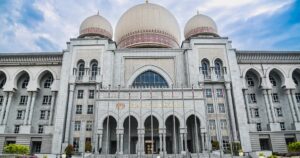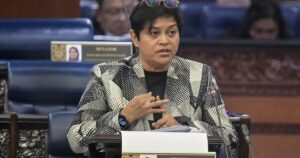
Johor’s Medini integrated township is entering a new phase, with plans that could reshape its role from a leisure destination into a hub for business tourism, technology and sustainable development.
At the centre is the Medini International Convention City (MICC), a project Iskandar Investment Berhad (IIB) president and CEO Idzham Hashim says will help capture a market the township has so far struggled to reach.
“A big chunk of tourism spending actually comes from business tourists, which Medini has not fully captured yet.
“We are looking to create a micro-city – a cutting-edge, flexible convention and exhibition centre integrated with hotels, retail, and public spaces,” he said in an interview with FMT.
MICC is designed to move Medini beyond family attractions such as Legoland and medical tourism by drawing in the higher-spending convention and exhibition crowd.
The project will also link directly into Johor’s growing connectivity with Singapore, making it easier for multinational companies to hold events across the Causeway.
Idzham added that the centre is being planned with platinum-level certification under Malaysia’s Green Building Index, in line with the township’s sustainability agenda.
“We want people to look at MICC as a city of the future, where you can walk from one end to another, well connected not only within Medini but to Singapore as well.
“We want business tourists to see Medini not only as a place to showcase and scale their businesses, but also as one that aligns with the sustainability agenda,” he said.
Digital and startup ambitions
IIB is also banking on the Tech Medini initiative to cement the township’s place as Johor’s digital hub.
The cluster pulls together robotics, blockchain and gaming startups under one umbrella, supported by services that allow companies to grow without worrying about overheads.
“We don’t just see these firms as tenants. We see them as growth partners. Our role is to provide support in funding, market access, and back-office services so they can focus on scaling up.
“We’ve already done the hardware — roads, utilities, fibre optics — now it’s about embedding the software to make Medini a success,” Idzham said.
Some startups that began with just two staff in Medini now employ more than 20, he noted, underlining the township’s appeal as a long-term base for digital companies.
Another piece of the puzzle is Wawari, a residential development still being shaped but intended to broaden the ecosystem around MICC and Tech Medini.
It sits within the larger Medini Innopolis masterplan, a 2,230-acre blueprint that recently won PropertyGuru Asia’s “Best Mega Township” award.
Net-zero ambitions
IIB also hopes to push Medini to the forefront of sustainable city design.
On a 60-acre site, the company is planning what it says will be one of Southeast Asia’s first net-zero-carbon central business districts, complete with solar-covered car parks, smart waste systems and green mobility solutions.
“Cities of the future need to be compact and efficient. With Medini, we have the opportunity to build a CBD that truly adopts net-zero carbon fundamentals,” Idzham said.
He said more than RM4 billion has already gone into building Medini’s infrastructure, from utilities to fibre-optic networks.
“That makes it different from greenfield sites, where companies have to wait years before operating.
“For businesses coming in, it will be plug and play. They don’t have to worry about waiting for years for infrastructure – electricity, water, connectivity – it’s already there,” Idzham said.
With Johor now enjoying record foreign investment and new cross-border initiatives with Singapore, Medini’s next phase will hinge on whether MICC and its supporting projects can deliver on that promise.






